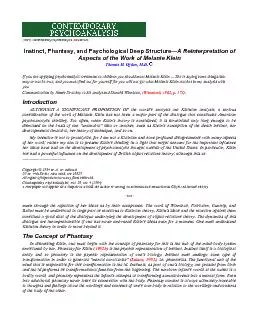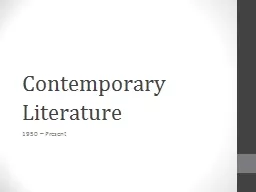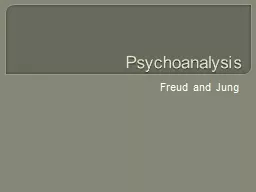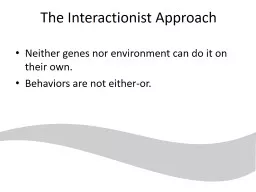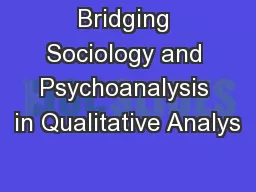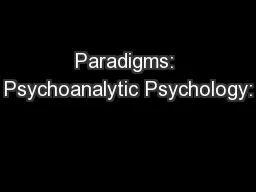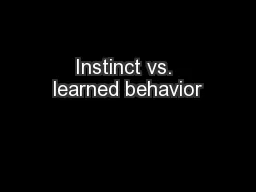PDF-(1984). Contemporary Psychoanalysis, Instinct, Phantasy, and PsycAspec
Author : mitsue-stanley | Published Date : 2015-09-23
Kleins conception of instinct derives from Freuds 1905 definition of instinct as the demand made by the body upon the mind for work p 168 For Klein the bodys demand
Presentation Embed Code
Download Presentation
Download Presentation The PPT/PDF document "(1984). Contemporary Psychoanalysis, Ins..." is the property of its rightful owner. Permission is granted to download and print the materials on this website for personal, non-commercial use only, and to display it on your personal computer provided you do not modify the materials and that you retain all copyright notices contained in the materials. By downloading content from our website, you accept the terms of this agreement.
(1984). Contemporary Psychoanalysis, Instinct, Phantasy, and PsycAspec: Transcript
Download Rules Of Document
"(1984). Contemporary Psychoanalysis, Instinct, Phantasy, and PsycAspec"The content belongs to its owner. You may download and print it for personal use, without modification, and keep all copyright notices. By downloading, you agree to these terms.
Related Documents

